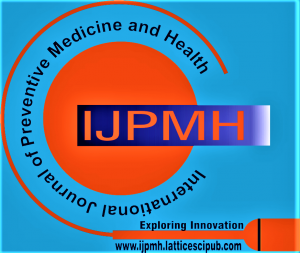![]()
Applications of Microfluidics in Biomedical and Pharmaceutical Fields -An Overview
Stefna Varghese1, Poonam Parashar2, Pragya3
1Stefna Varghese, Student, Department of Pharmacy, Amity Institute of Pharmacy, Amity University, Lucknow (Uttar Pradesh), India.
2Dr. Poonam Parashar, Associate Professor, Department of Pharmaceutics, Amity Institute of Pharmacy, Amity University, Lucknow (Uttar Pradesh), India.
3Dr. Pragya, Assistant Professor, Department of Pharmaceutics, Amity Institute of Pharmacy, Amity University, Lucknow (Uttar Pradesh), India.
Manuscript received on 04 March 2025 | First Revised Manuscript received on 24 March 2025 | Second Revised Manuscript received on 17 April 2025 | Manuscript Accepted on 15 May 2025 | Manuscript published on 30 May 2025 | PP: 5-10 | Volume-5 Issue-4, May 2025 | Retrieval Number: 100.1/ijpmh.D106605040525 | DOI: 10.54105/ijpmh.D1066.05040525
Open Access | Ethics and Policies | Cite | Zenodo | OJS | Indexing and Abstracting
© The Authors. Published by Lattice Science Publication (LSP). This is an open access article under the CC-BY-NC-ND license (http://creativecommons.org/licenses/by-nc-nd/4.0/)
Abstract: The precise manipulation of fluids at the microscale level within minuscule channels measuring tens to hundreds of micrometres is the subject of the multifaceted field of microfluidics. This technology has transformed the pharmaceutical industry by enabling miniaturised, highthroughput, and economical drug discovery, formulation, and delivery solutions. Creating sophisticated drug delivery systems, such as nanoparticles and liposomes, has become significantly simpler due to this method’s ability to precisely control fluid dynamics, which enables faster reaction kinetics and improved drug encapsulation. Beyond drug formulation, microfluidic platforms enable disease modelling, toxicity assessment, and pharmacokinetic/pharmacodynamic analysis, providing a quick and efficient alternative to conventional techniques. Additionally, devices like microfluidic chips integrate multiple analysis processes into a single device, leading to reduced reagent consumption and enhanced research opportunities. Furthermore, microfluidics is vital in personalised medicine and point-of-care diagnostics, offering rapid, more accurate testing for a customised treatment strategy. The increased use of microfluidics in pharmaceutical research is promising for facilitating faster drug discovery, enhancing individualised medicine, and improving point-of-care diagnostic testing. This paper discusses the definition, importance, and applications of microfluidics in the pharmaceutical field, with a focus on its implications for the future of drug discovery and healthcare.
Keywords: Microfluidics, Drug Discovery, Pharmaceutical Research, Point-of-Care Diagnostics, Personalized Medicine.
Scope of the Article: Health Care Management
